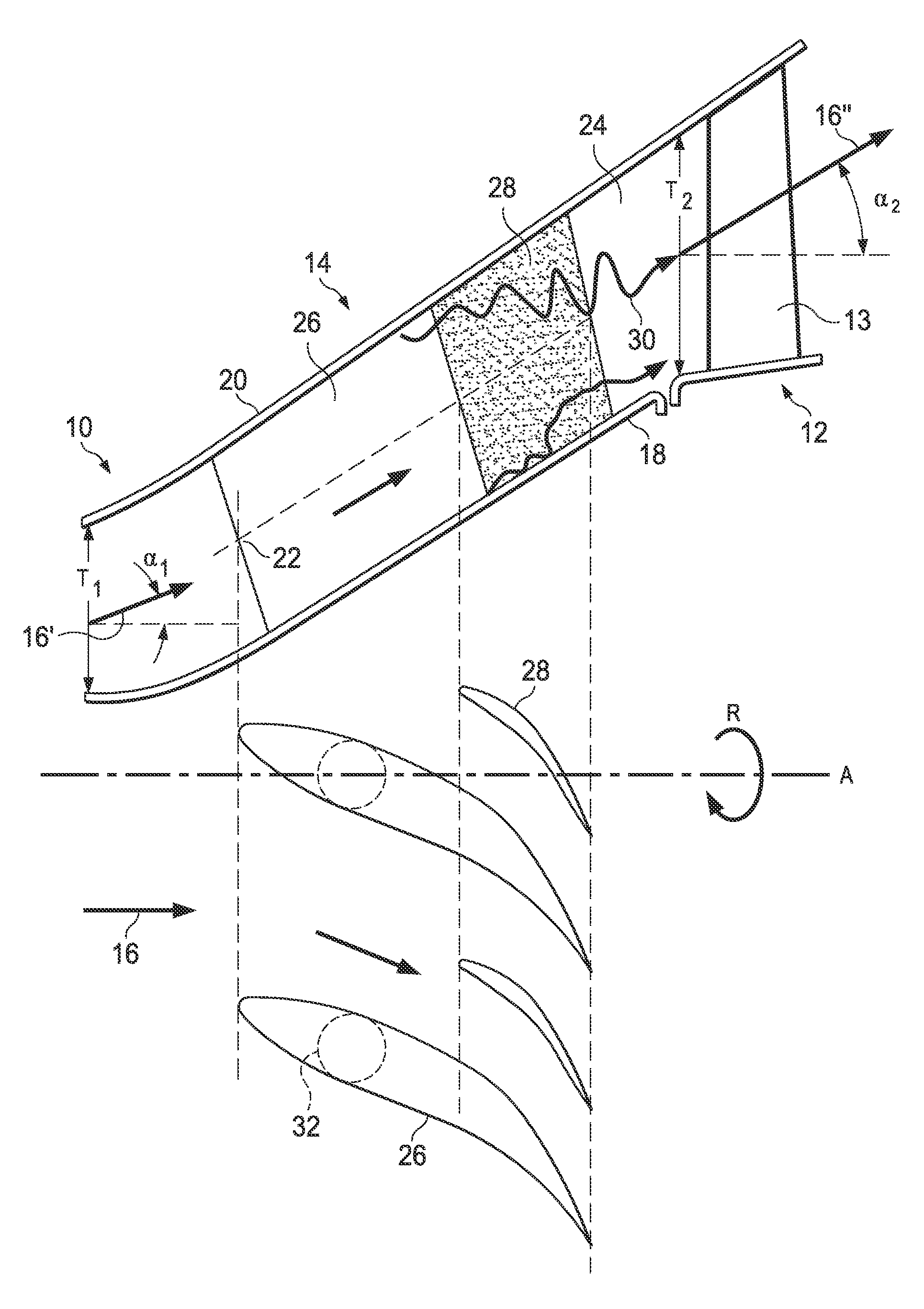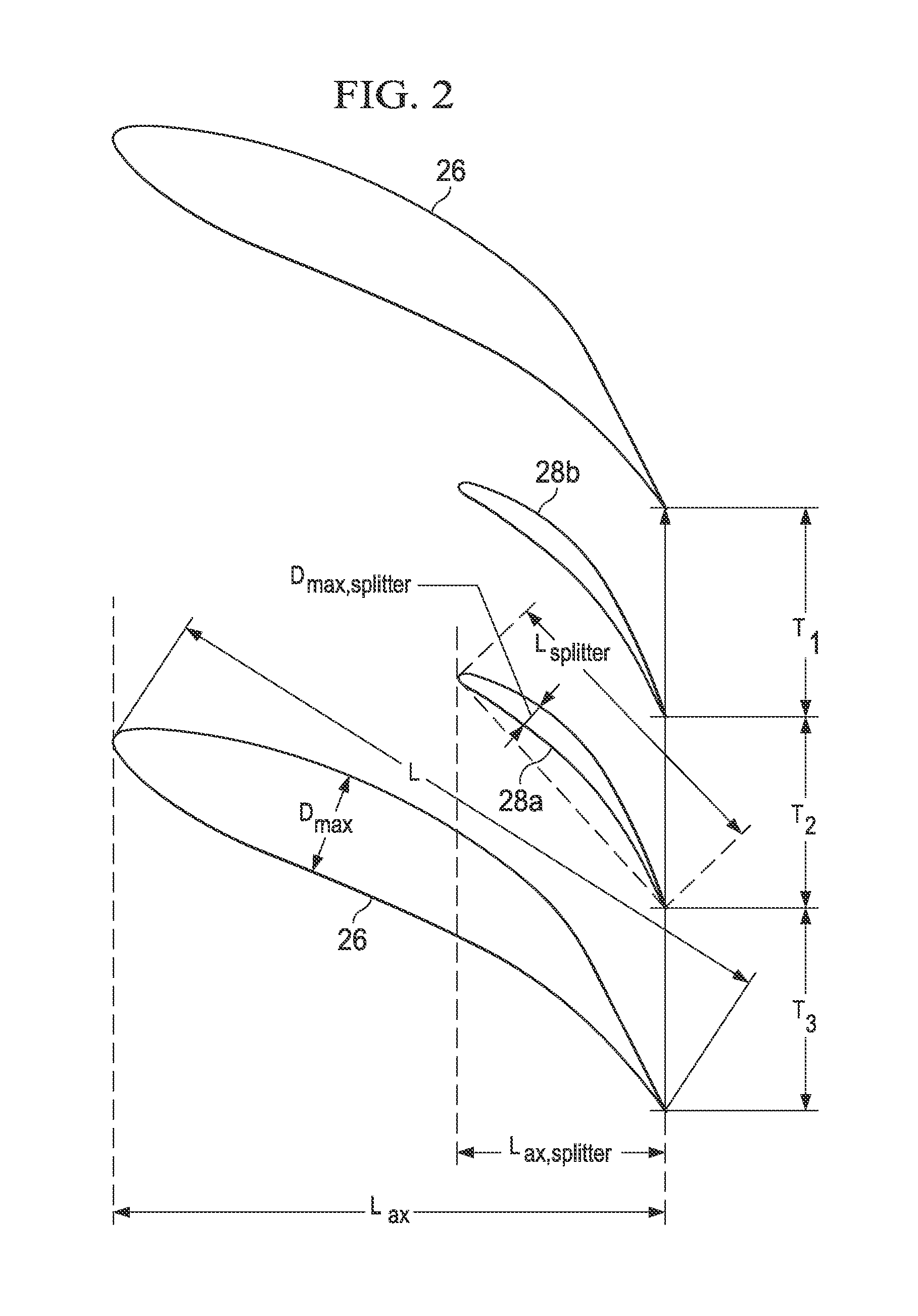Transition channel of a turbine unit
a turbine unit and channel technology, applied in the direction of motors, air transportation, climate sustainability, etc., can solve the problems of high noise level of the turbine, inconvenient operation, and insufficient flow of secondary flows, so as to improve the flow, increase the life of the blading, and reduce the effect of nois
- Summary
- Abstract
- Description
- Claims
- Application Information
AI Technical Summary
Benefits of technology
Problems solved by technology
Method used
Image
Examples
Embodiment Construction
[0033]FIG. 1 shows, as an example, a transition channel between two components of a turbine, hereinafter turbine components, in axial half-section and median section (top part of the drawing) and in a planar developed view or profile section (bottom part of the drawing).
[0034]According to the representation in FIG. 1, a flow process between a high-pressure turbine 10 and a low-pressure turbine 12 is determined by a transition channel 14. The flow process is indicated by an arrow 16.
[0035]The transition channel 14 has an inner wall or envelope surface 18 and an outer wall or envelope surface 20, which together define an annular cross section. In particular, an entry cross section 22 is defined at the start of the transition channel 14 and an exit cross section 24 at the outlet of the transition channel 14. It should be noted that the transition channel 14 is configured stationary with respect to the turbine axis A or an otherwise not represented turbine housing, while the high-pressu...
PUM
 Login to View More
Login to View More Abstract
Description
Claims
Application Information
 Login to View More
Login to View More - R&D
- Intellectual Property
- Life Sciences
- Materials
- Tech Scout
- Unparalleled Data Quality
- Higher Quality Content
- 60% Fewer Hallucinations
Browse by: Latest US Patents, China's latest patents, Technical Efficacy Thesaurus, Application Domain, Technology Topic, Popular Technical Reports.
© 2025 PatSnap. All rights reserved.Legal|Privacy policy|Modern Slavery Act Transparency Statement|Sitemap|About US| Contact US: help@patsnap.com



